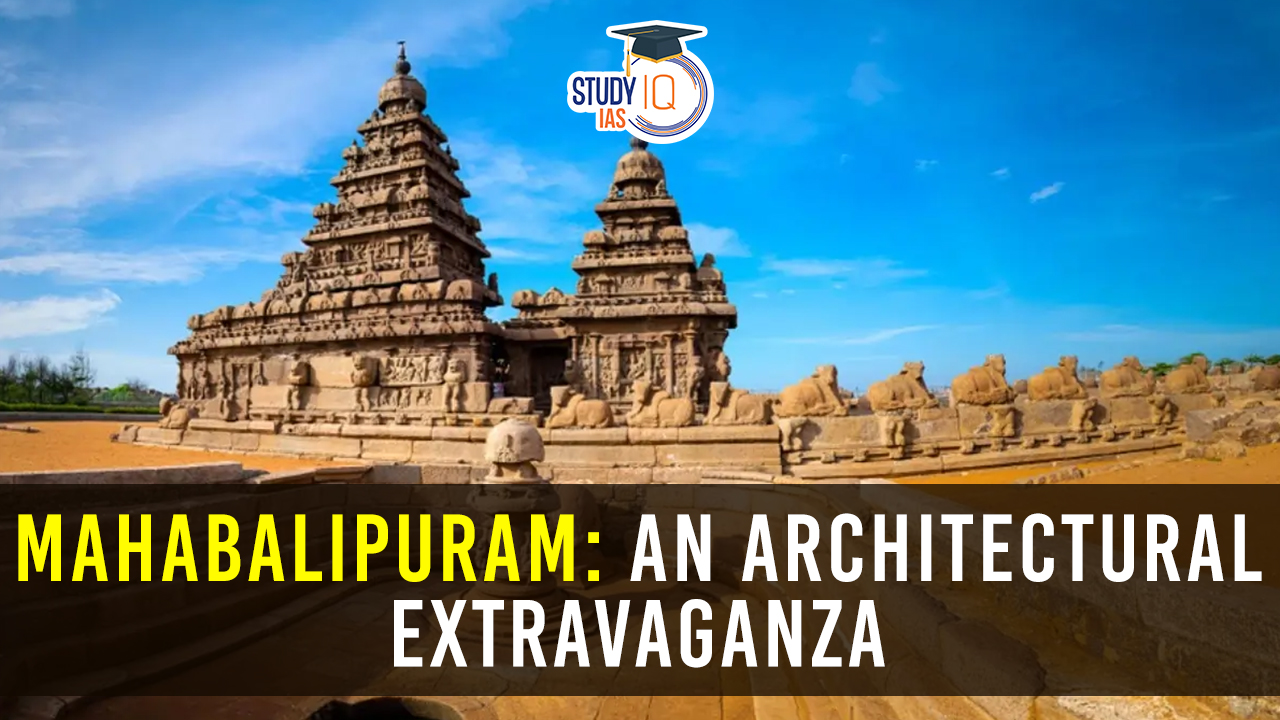Table of Contents
Mahabalipuram, also known as Mamallapuram, is a UNESCO World Heritage site located on the Coromandel Coast of the Bay of Bengal in the state of Tamil Nadu, India. Renowned for its exceptional rock-cut temples, monolithic structures, and intricate carvings, Mahabalipuram stands as a testament to the architectural and artistic brilliance of ancient India. The town was a bustling seaport during the 7th century, serving as a thriving center for trade and cultural exchange.
We’re now on WhatsApp. Click to Join
Historical Background
The Imperial Pallavas, who ruled for about 400 years from the 6th century AD, established their capital in Kanchipuram and designated Mamallapuram as their seaport. The term ‘Pallava’ is derived from Sanskrit, meaning ‘sprout,’ and according to mythology, it originated from the son of Drona, Ashvatthama. The dynasty founded by Pallava evolved into the Pallava dynasty.
History of Mahabalipuram
Mahabalipuram’s history is rich and diverse, noted even in ancient Greek works such as the ‘Periplus of the Erythrean Sea’ from the 1st century AD and mentioned by Ptolemy in the 2nd century AD. The town, originally known as Mallai or Kadalmallai, has deep-rooted connections with Vaishnava saints like Bhoothath Alvar and Thirumangai Alvar.
The Chinese traveler Hiuen Tsang, in the 7th century AD, identified Mahabalipuram as the Pallava’s seaport, highlighting its significance in historical trade routes. The town has been a pilgrimage center, referenced in European literature as the ‘Place of 7 Pagodas’ in the 14th century.
After the Pallavas, Mahabalipuram thrived under the Cholas and the Vijayanagar Empire. European awareness of Mahabalipuram increased with Marco Polo’s visit in the 13th century, while the first English visitor, William Chambers, explored the site in 1788. The monuments, initially buried under sand, gained prominence through the efforts of antiquarians like Colin Mackenzie, contributing to Mahabalipuram’s status as a classical site of Indian historical archaeology.
Mahabalipuram: Architectural Marvels
The Shore Temple, a masterpiece of Pallava architecture, stands proudly on the shores of the Bay of Bengal in Mahabalipuram. Constructed by Narasimhavarman II, also known as Rajasimha, during the 7th and 8th centuries AD, this masonry temple complex is a testament to the early structural stone temple architecture in South India.
Architectural Layout
- The complex comprises three temples, each dedicated to different deities – Shiva and Vishnu.
- The Rajasimha Pallavesvara temple, facing west and the sea, is a key highlight. Its narrow and elongated Vimana houses a fluted Siva Linga known as ‘Dhara Lingam.’
Significance
- The Shore Temple is considered a forerunner to the great temple architecture of Tamil Nadu.
- It features narrow pointed towers, a Prakaram (circumambulation corridor), and boundary walls reminiscent of a fortress.
- The intricate lion and Nandi sculptures along the temple add to its aesthetic appeal.
Structural Innovation
- Rajasimha is credited with establishing the tradition of building structural stone temples in Tamil Nadu through the Shore Temple.
- The combination of rock-hewn and constructed elements sets it apart, showcasing the evolution of temple architecture during the Pallava period.
Five Rathas (Pancha Pandava Rathas)
Carved out of a hillock during the reign of Narasimhavarman I, the Five Rathas are monolithic temples that stand as unique representations of diverse architectural styles. Each Ratha is dedicated to a different deity.
- Draupadi Ratha:
- Dedicated to Goddess Durga.
- Shaped like a South Indian hut with a curvilinear roof adorned with makara torana decorations.
- Features a 4-armed standing Durga inside the cell, surrounded by devotees and dwarf ganas.
- Arjuna Ratha:
- Dedicated to Lord Shiva.
- Octagonal blocks at the top, a pyramidal roof with diminishing storeys and pavilions anticipate later Vimana styles.
- Resembles the Dharmaraja Ratha.
- Bhima Ratha:
- Dedicated to Vishnu in repose.
- Replicates a Buddhist chaitya and lacks figure carvings.
- Roof shaped like the hood of a country wagon.
- Nakula-Sahadeva Ratha:
- Dedicated to Indra, the rain god.
- Apsidal in shape with ornamental features, devoid of figure carvings.
- Exhibits a Gajaprashta Vimana, resembling the back of an elephant.
- Dharmaraja Ratha:
- Dedicated to Hari-Hara (Vishnu-Shiva) and Ardhanareeswara.
- Octagonal blocks at the top, a pyramidal roof with diminishing storeys and pavilions.
- Represents a prototype of South Indian temples.
Mahabalipuram UPSC
The Pallava kings, whose names often end with ‘Varman,’ signify protection by Lord Vishnu. The headless figures beneath the Vishnu temple are believed to represent kings Mahendravarman and Simha Vishnu, as well as sage Agasthya and Drona, symbolizing the Pallavas’ triumph over their enemies and connection to illustrious ancestors.


 Golconda Blue Diamond, a Rare Gem from I...
Golconda Blue Diamond, a Rare Gem from I...
 Kailash Mansarovar Yatra to Resume Soon,...
Kailash Mansarovar Yatra to Resume Soon,...
 Bihu Festival and Dance of Assam, Histor...
Bihu Festival and Dance of Assam, Histor...





















